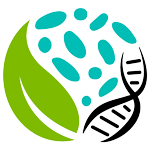Association mapping, transcriptomics, and transient expression identify candidate genes mediating plant-pathogen interactions in a tree
Wellington Muchero, Kelsey, L. Sondreli, Jin-Gui Chen, Breeanna R. Urbanowicz, Jin Zhang, Vasanth Singan, Yongil Yang, Robert S. Brueggeman, Juan Franco-Coronado, Nivi Abraham, Jeong-Yeh Yang, Kelley W. Moremen, Alexandra J. Weisberg, Jeff H. Chang, Erika Lindquist, Kerrie Barry, Priya Ranjan, Sara Jawdy, Jeremy Schmutz, Gerald A. Tuskan, and Jared M. LeBoldus
18 October 2018, PNAS115(45): 11573-11578; doi: 10.1073/pnas.1804428115
Abstract
Invasive microbes causing diseases such as sudden oak death negatively affect ecosystems and economies around the world. The deployment of resistant genotypes for combating introduced diseases typically relies on breeding programs that can take decades to complete. To demonstrate how this process can be accelerated, we employed a genome-wide association mapping of ca. 1,000 resequenced Populus trichocarpa trees individually challenged with Sphaerulina musiva, an invasive fungal pathogen. Among significant associations, three loci associated with resistance were identified and predicted to encode one putative membrane-bound L-type receptor-like kinase and two receptor-like proteins. A susceptibility-associated locus was predicted to encode a putative G-type D-mannose–binding receptor-like kinase. Multiple lines of evidence, including allele analysis, transcriptomics, binding assays, and overexpression, support the hypothesized function of these candidate genes in the P. trichocarpa response to S. musiva.
Citation
Muchero, W., K. L. Sondreli, J. G. Chen, B. R. Urbanowicz, J. Zhang, V. Singan, Y. Yang, R. S. Brueggeman, J. Franco-Coronado, N. Abraham, J. Y. Yang, K. W. Moremen, A. J. Weisberg, J. H. Chang, E. Lindquist, K. Barry, P. Ranjan, S. Jawdy, J. Schmutz, G. A. Tuskan and J. M. LeBoldus (2018). “Association mapping, transcriptomics, and transient expression identify candidate genes mediating plant-pathogen interactions in a tree.” Proc Natl Acad Sci U S A.
Outside Links
https://doi.org/10.1073/pnas.1804428115

